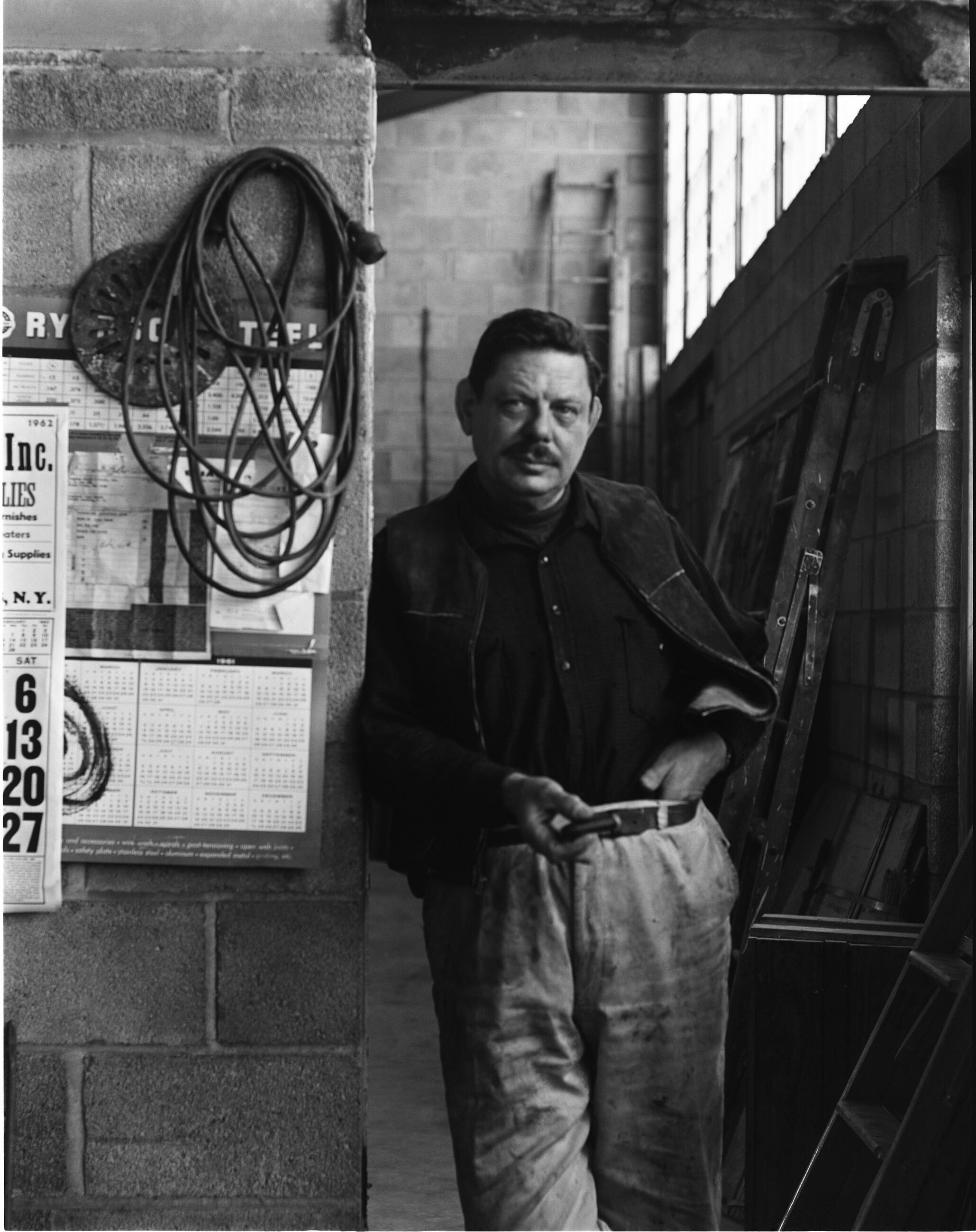
Alexander Calder / David Smith
10 June - 16 September 2017
Zürich
Installation views
About the Artists

Alexander Calder
Alexander Calder was born in 1898, the second child of artist parents—his father was a sculptor and his mother a painter. In his mid-twenties, Calder moved to New York City, where he studied at the Art Students League and worked at the ‘National Police Gazette,’ illustrating sporting events and the Ringling Bros. and Barnum & Bailey Circus. Shortly after his move to Paris in 1926, Calder created his ‘Cirque Calder’ (1926–31), a complex and unique body of art. It wasn’t long before his performances of the ‘Cirque’ captured the attention of the Parisian avant-garde.
In 1931, a significant turning point in Calder’s artistic career occurred when he created his first kinetic nonobjective sculpture and gave form to an entirely new type of art. Some of the earliest of these objects moved by motors and were dubbed ‘mobiles’ by Marcel Duchamp—in French, mobile refers to both ‘motion’ and ‘motive.’ Calder soon abandoned the mechanical aspects of these works and developed suspended mobiles that would undulate on their own with the air's currents. In response to Duchamp, Jean Arp named Calder's stationary objects ‘stabiles’ as a means of differentiating them.
Calder returned to live in the United States with his wife, Louisa, in 1933, purchasing a dilapidated farmhouse in the rural town of Roxbury, Connecticut. It was there that he made his first sculptures for the outdoors, installing large-scale standing mobiles among the rolling hills of his property. In 1943, James Johnson Sweeney and Duchamp organized a major retrospective exhibition at the Museum of Modern Art, New York, which catapulted Calder to the forefront of the New York art world and cemented his status as one of the premier American contemporary artists.
In 1953, Calder and Louisa moved back to France, ultimately settling in the small town of Saché in the Indre-et-Loire. Calder shifted his focus to large-scale commissioned works, which would dominate his practice in the last decades of his life. These included such works as ‘Spirale’ (1958) for the UNESCO headquarters in Paris and ‘Flamingo’ (1973) for Chicago’s Federal Center Plaza. Calder died at the age of seventy-eight in 1976, a few weeks after his major retrospective, ‘Calder’s Universe,’ opened at the Whitney Museum of American Art, New York.

David Smith
David Smith is regarded as one of the most innovative artists and important American sculptors of the 20th century. He transformed sculpture by rejecting the traditional methods of carving and casting in favor of torch-cutting and welding, becoming the first artist known to make welded sculpture in America. These methods allowed him to work in an improvisational manner in creating open and large-scale, abstract sculptures. In his later years, he installed his sculptures in the fields of his home in the Adirondack Mountains, where a dialogue between the art object and nature emerged as central to his practice. His sculpture-filled landscape inspired Storm King Art Center and other sculpture parks throughout the world, as well as anticipating the land and environmental art movements.
Smith was born in 1906 in Decatur, Indiana. He worked briefly as a welder in an automobile factory before moving to New York City to become an artist in 1926. He studied painting at the Art Students league, where Cubism and Surrealism were foundational to his practice. He began welding sculpture around 1933 after seeing reproductions of constructed steel sculptures by Pablo Picasso and Julio González. He later became associated with the abstract expressionist movement and paved the way for minimalism with radically simplified, geometric works. Painting and drawing remained integral to what Smith called his ’work stream’. He embraced a holistic attitude toward artmaking and dismissed the idea of a separation between mediums. Acknowledging the tradition of painted sculpture throughout art history and drawing from the bold palettes of modernism and pop culture, Smith often painted his sculptures. David Smith died in 1965, leaving behind an expansive, complex, and powerful body of work that continues to exert influence upon subsequent generations of artists.
Smith began exhibiting his work as early as 1930. His first survey was organized by the Museum of Modern Art, New York in 1957. His sculpture was represented by the United States at the São Paulo Biennale in 1951 and at the Venice Biennale in 1954 and 1958. Posthumous retrospectives have been held at the Solomon R. Guggenheim Museum (1979 and 2006, which traveled to Tate Modern, London and the Centre Pompidou, Paris) and at the Los Angeles County Museum of Art (2011, which traveled to the Whitney Museum of American Art, New York and the Wexner Center for the Arts, Columbus, Ohio). Other major surveys have been organized at the Sezon Museum of Art, Tokyo (1994, traveled throughout Japan), the Museo Nacional Centro de Arte Reina Sofía, Madrid (1996), Storm King Art Center (1997–99), and Yorkshire Sculpture Park, Wakefield, UK. A three-volume, fully illustrated catalogue raisonné of Smith’s sculpture was published in 2021 by the Estate of David Smith and distributed by Yale University Press. A biography by Michael Brenson, David Smith: The Art and Life of a Transformational Sculptor, was published by Farrar, Straus, and Giroux in 2022.
Current Exhibitions
1 / 12


















